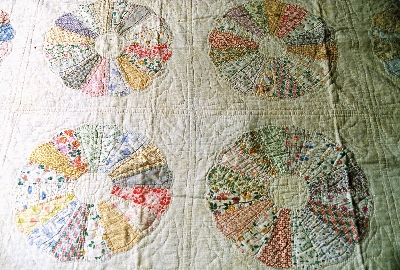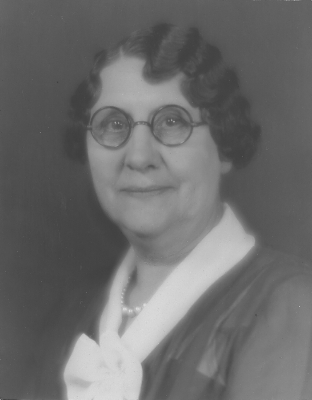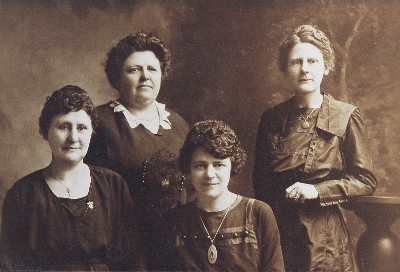Quilt No.67MC - Mare Carter

2235 x 1778mm
Made by Eva Leota Towe in Southern California, USA, prior to 1945. In 1950 Eva's grand-daughter Mare (Carter) came to Australia. In 1953 Eva died. "In 1960 my mother brought me grandmother's legacy, her hand-works including the quilts, when she visited Australia." Mare owns the quilt, one of a collection of 16 of her grandmother's quilts. They were used frequently as family quilts and now occasionally.
"VINTAGE QUILTS 1898-1938
These quilts were made by my grandmother, Eva Leota Towe. Her maiden name was Tussey and she came from Missouri, U.S.A. In early 1900 grandmother moved to Washington State and later to Southern California.
Patchwork was our family tradition. It provided a frugal means to "dress" a home and to make cosy beds which were also pretty. I rarely saw grandmother without her bag of patches and templates handy, rarely saw her sitting idle; usually while chatting or listening to the radio, she'd be quietly piecing together patches which were cut mostly from used garments. Her scissors were kept sharp by my grandfather, she wore out countless thimbles, her needles were regularly pushed in and out of a little sock of sand to ginger up their points. The actual quilting was often done in company with friends who belonged to the Rebecca Lodge. At least one of these quilts is a Friendship Quilt made and signed by those women in 1933.
Grandmother also embroidered, to decorate her tables, her aprons and also her tea-towels which were always made from bleached flour sacks. It embarrassed my Mother and her sister that their underclothes were made from the same materials. Maybe this is why sewing and handcrafts skipped a generation in my family. The contribution my mother made was to keep these things safe and gradually pass them along to me.
My children suffered from allergies. Wool was too itchy, and too hot. The cotton quilts of my grandmother were perfect for our beds here in Australia. Thus we used our legacy to good purpose. Sadly, most of the quilts are now tattered and worn, but much loved for that, and for the affection which she sewed into them. She never made things to be preserved as objects of art. They represent her creativity, her duty as a woman and a home-maker, and her principle means of recreation and sociability."
[Mare Carter, Foxground,1998]


Related Quilts:
2120 x 1720mm
1400 x 400mm
2510 x 1850mm






